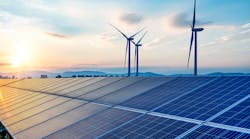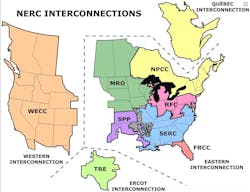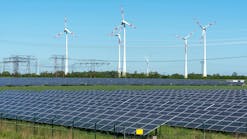The Federal Energy Regulatory Commission this week issued a proposed role on solving “significant current backlogs” in grid interconnection queues. According to FERC, there is more than 1,400 GW worth of generation capacity and energy storage waiting to connect into the system.
“Projects now face an average timeline of more than three years to get connected to the grid,” reads a FERC release on the notice of the proposed rule (NOPR). “As the resource mix rapidly changes, the commission’s policies must keep pace. Today’s NOPR proposes reforms to ensure that interconnection customers can access the grid in a reliable, efficient, transparent and timely manner.”
The queue can include hundreds of GWs in utility-scale wind and solar projects, but also more grid-edge projects such as distributed energy and microgrids which include renewables that can deploy back into the main grid.
The 1,400 GW of waiting generation and battery storage capacity is triple the backlog volume of five years ago, FERC noted. The resource planners now face a timeline of more than three years to gain grid connection.
All of the FERC Commissioners agreed that this needs to change.
“Today’s unanimous action addresses the urgent need to update, expedite and streamline our processes to interconnect new resources to the grid,” FERC Chairman Rich Glick said in a statement. “We are witnessing unprecedent demand for new resources seeking to interconnect to the transmission grid, and queue delays are hindering customers’ access to new, low-cost generation.”
Two years ago, a University of California-Berkley Goldman School of Public Policy report warned about the backlogs of zero or low-carbon energy resources in line to contribute to the nation’s generation mix. According to the UCB report, the 2020 interconnection queues in the U.S. include some 544 GW of wind, solar and standalone battery storage.
Those resources are needed to help transition the nation’s grid to a net-zero goal in coming decades, advocates say.
The proposed FERC rule would include several key reforms, including a move toward larger interconnection studies by transmission providers to look at numerous generating participants rather than one facility at a time.
FERC also is considering fines for transmission providers which fail to complete the interconnection studies within deadlines.
The U.S. power transmission and distribution system is divided into three major grids: The Eastern and Western Interconnections and the Texas grid overseen by the Electric Reliability Council of Texas (ERCOT).
Regional transmission operators include ISO-New England, Midcontinent Independent System Operator, PJM Interconnection (mid-Atlantic), Southwest Power Pool and other system operators such as California ISO, New York ISO and ERCOT.
(Rod Walton, senior editor for EnergyTech, T&D World's sister brand, is a 14-year veteran of covering the energy industry both as a newspaper and trade journalist. He can be reached at [email protected]).



